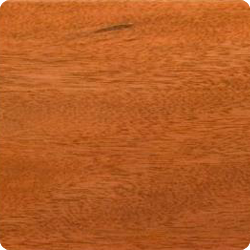Detailed Specs: Kabukalli
Scientific Name: Goupia glabra
Family: Celastraceae
Other Names: Saino, Sapino (Colombia) Kopi, (Suriname), Goupie (French Guiana), Cupiuba (Brazil)
The Tree:
Large, buttressed, semi-deciduous, canopy tree; grows to a height of 130 ft and with diameters of 36 inches but usually 12 to 24 inches with a cylindrical bole.
The Wood
General Characteristics: The heartwood is light reddish brown and has a plain appearance, darkening on exposure. The sapwood is a distinct thick brownish or pinkish colour and sharply demarcated. Luster is medium to rather high; texture is medium to coarse, grain straight to inter locked. Freshly cut timber has an unpleasant scent which is lost on drying.
Weight: Basic specific gravity (oven dry weight/green volume) 0.72; air- dry density 54 pcf.
Drying and Shrinkage: Moderately difficult to air season, dries at a moderate rate with only slight warping and checking. Kiln schedule T7-B3 is suggested for 4/4 stock. Shrinkage from green to oven dry: radial 4.5%; tangential 8.0%; volumetric 12.6%.
Working Properties: It is rated fair to good in operations but torn and chipped grain is common in planing because of interlocked grain. Coarser material requires filler to obtain smooth finish.
Mechanical Properties: (First two sets of data based on the 2-in standard; third set on the 2-cm standard).
|
Moisture |
Bending Strength (psi) |
Modules of Elasticity (1000 psi) |
Maximum Crushing Strength (psi) |
| Green (73)
12% 12% Green (48) 15% |
11,480
15,300 16,300 14,000 17,600 |
1,810
2,150 2,370 1,980 N/A |
6,170 8,350 10,850 7,350 9,750 |
Janka side hardness about 1400 lb for green material and 1840 lb at 12% moisture content. Forest Products Laboratory toughnes saverage for green and dry material is 132 in-lb (5/8 – in specimen).
Durability: According to laboratory evaluations the wood has good resistance to attack by both brown and white rot fungi, but rated only slight to moderately resistant to decay in field tests done in Guyana. Also resistant to dry wood termite attack b ut has little resistance to marine borers.
Distribution: Uplands of the lower Amazon, the Guianas, Kopi (Suriname) and the Serrania de San Lucas, Cara -Opon, Rio Cauca Valley, and other regions of Columbia.
Preservation: Heartwood is very resistant and sapwood moderately resistant to preservation treatments using either open tank or pressure vacuum systems.
Uses: Heavy construction, industrial flooring, furniture components. Highly favoured general purpose timber to the Guianas.
References
– Chundnoff, Martin (1984), “Tropical Timbers of the World.” USDA Forest Service Ag. Handbook No.607.



